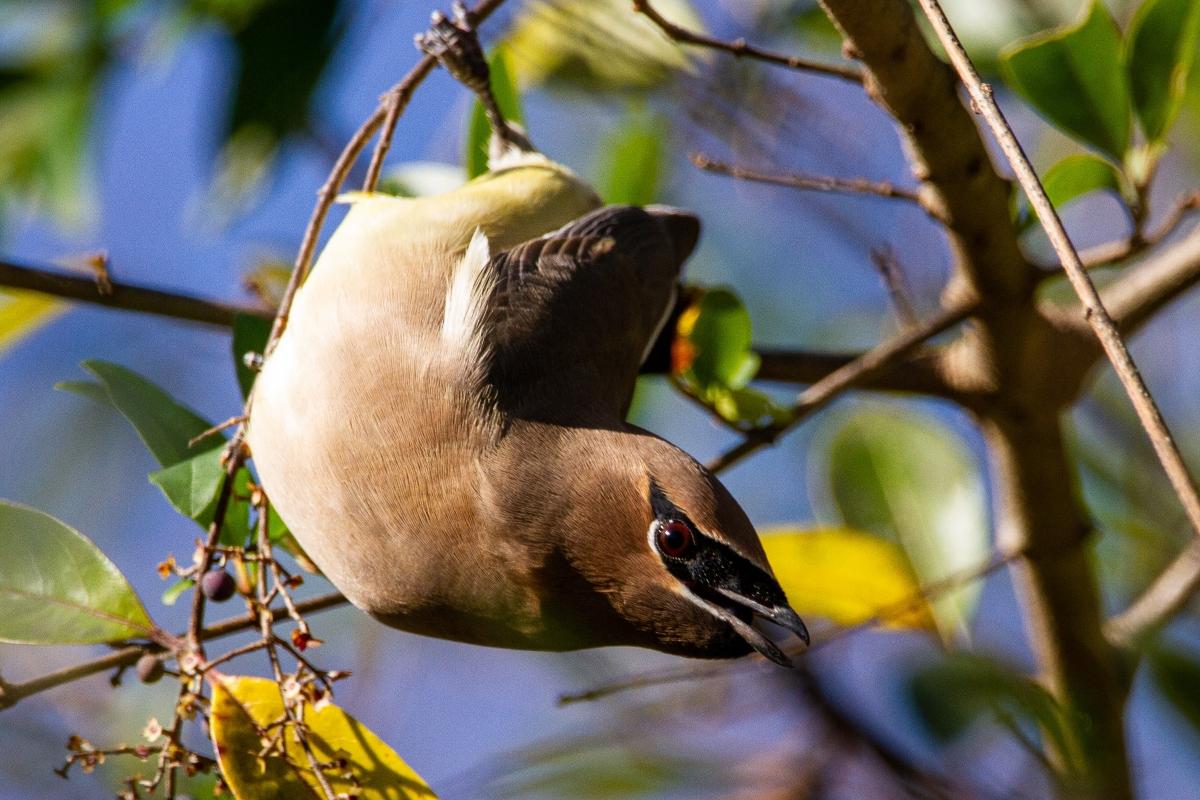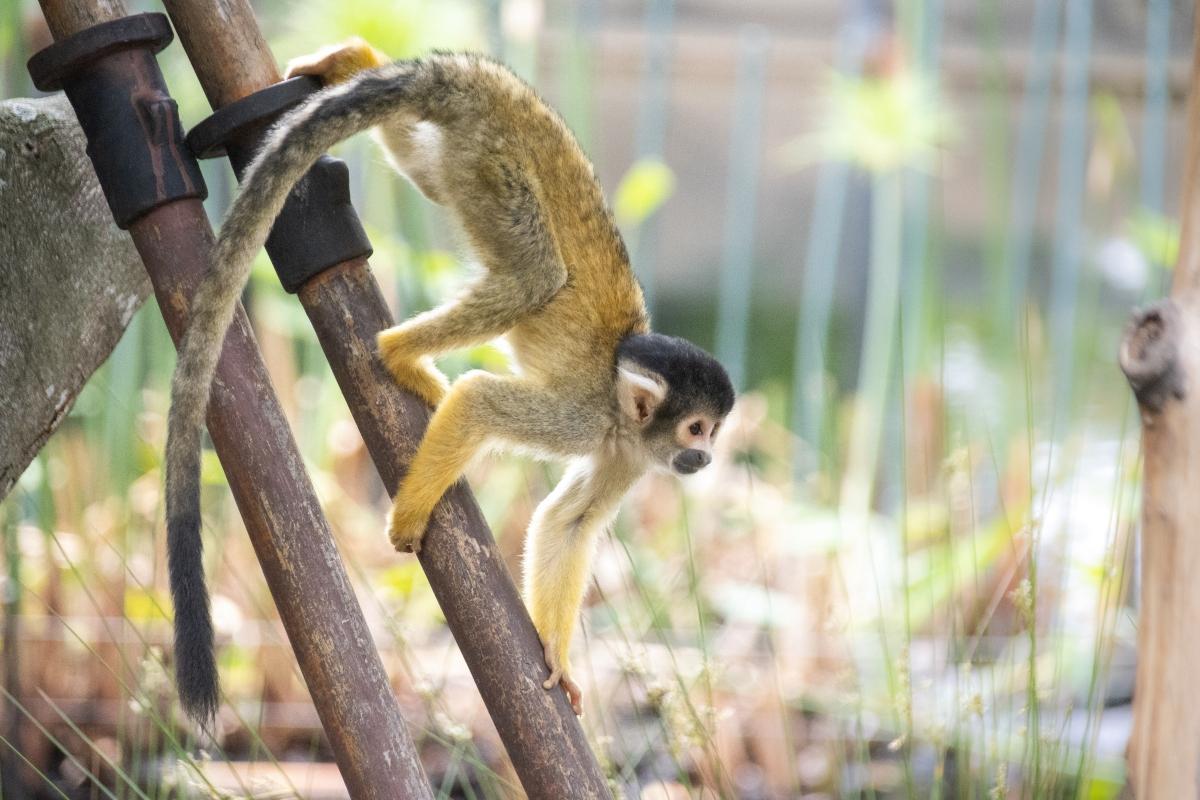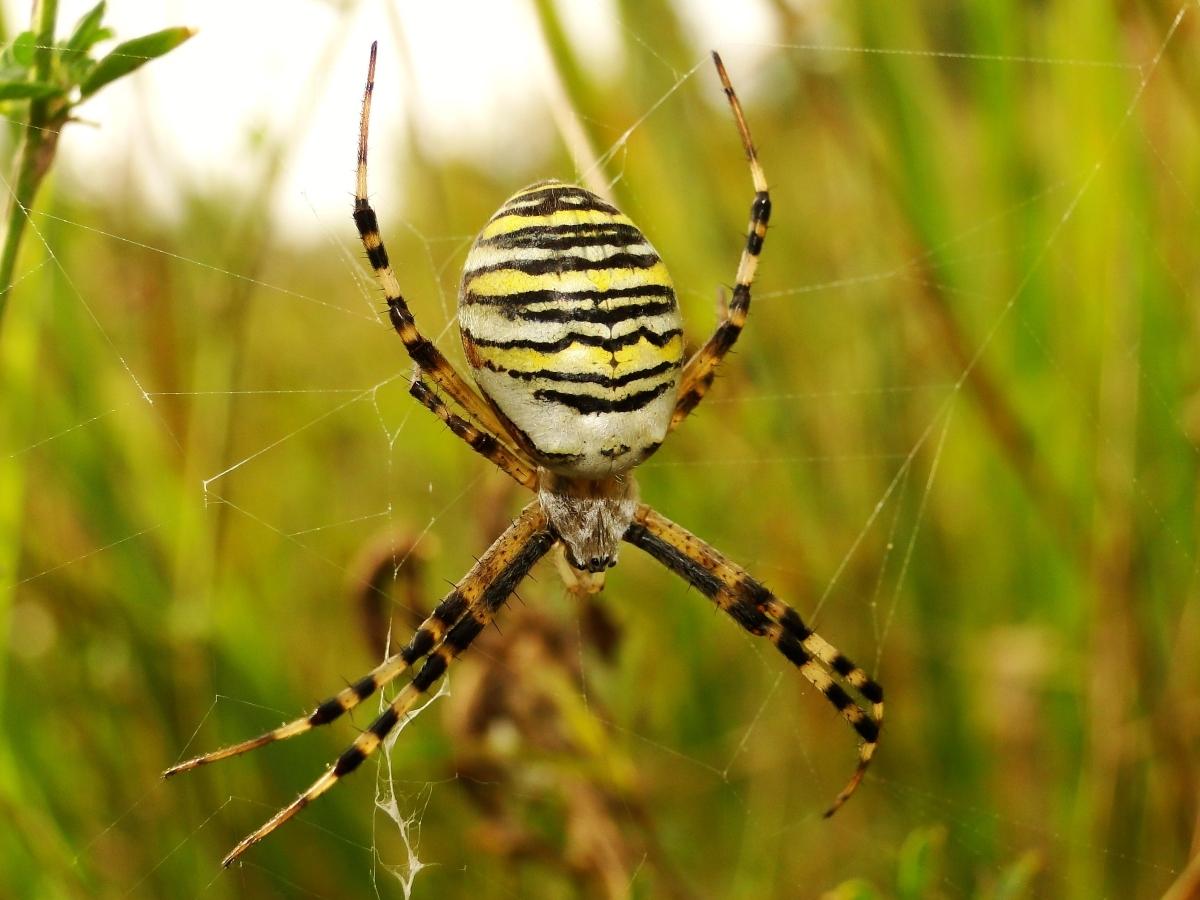In the forest, there are quite a few animals which spend their life upside down.
The biggest animal in this group is the Sloth. It has long limbs and is well adapted to live on trees. It walks well in an upside-down position , holding on to branches by its powerful and curved claws. The
The young one clings to its mother's neck firmly with its long arms. Occasionally, however, the sloth comes to the ground but has great difficulty in dragging itself along by hooking on its claws to the stories and tufts of grass.
Another queer-looking animal living upside-down and enjoying is to the full is the African bush baby. It has a large sensitive ear which can be folded at will. Its toes are flattened discs which give it a firm foothold. It sleeps most of the day but at night is very active. It feeds on fruits, insects, and bird's eggs. It has large eyes compared with the size of its head.
The Wooly opossum, a small American animal that carries its young in a pouch lives upside-down. It is equally at home on the ground s high up in the branches of trees. On the trees, it uses its prehensile tail as a "fifth-hand" and sometimes the whole family as strap-hand, the mother carrying her young on her back. One noticeable feature of the animal is its knack of feigning death. When captured or frightened, the Opossum pretends to be dead ; hence the expression 'TO PLAY OPOSSUM' .
The possum will take beating without giving any sign of life. It carries this deception to such an extent that sometimes it lies down with its tongue protruding from its mouth.
The tree Pangolin can hang by its tail head downwards The muscles in the tail are so strong that strong that it can lift itself with ease from a hanging position to the top of the branch.
Birds, it seems, have a strong dislike to the upside-down position although many adapt it while feeding.
Nuthatch , a small sharp-beaked tree-climbing bird differs from all other ree-climbing birds in its capacity to descent head downwards. This may be due to the fact that the quills of the bird's short tail are not stiff enough to provide support while climbing .
As The Spruce Pets explains, parakeets habitually hang upside-down for part of their days. Parakeets can also be called budgies, and they're little birds that may have green, yellow, or blue feathers. Birdwatching can be a pleasure when you have a few playful birds at home. They have been known to sometimes sleep upside down and can even turn their heads 180 degrees. Upside-down birds are typically believed to be happy.
The cedar waxwing, which feeds largely on cedar berries during the winter and on insects during the summer, can handle spending time upside down. The National Wildlife Federation says that cedar waxwings have waxy red tips on their secondary feathers. They may pluck cedar berries from a perch, while hovering in midair, or while hanging upside down.

Of course, bats are some of the animals most well-known for hanging upside-down. As the Iowa Department of Natural Resources explains, hanging upside down has several purposes. That position helps bats launch into flight since their wings aren't as strong as a bird's. Also, their back claws are structured so that hanging doesn't exert energy.
Bats can hang upside down because they're small enough that blood doesn't pool in their heads as it would for humans. Plus, hanging this way offers security, since bats can sleep in unique places that are harder for predators to reach.
 \
\
Spider monkeys can hang upside down by their tails. They have prehensile tails, meaning their tails are able to grasp and hold objects, such as tree branches.
Chimpanzees also spend their time in the trees, at times hanging upside down.

A number of spider species can hang upside down. Arachnids like this one can of course spend much of their time upside down in their webs. One study showed that spiders could be sleeping when they hang upside down.
Birds
While a number of bird species may temporarily cling upside down from a tree branch to tend to their nest or snatch a tasty morsel, most spend their time right side up. Exceptions to this include the beautiful blue bird of paradise (Paradisaea rudolphi), which inhabits the forests of New Guinea. Males of the species engage in elaborate courtship displays, which feature the birds hanging upside down during various parts of the performance. Additionally, nuthatches (Sitta) inhabiting the rain forest are able to creep and hop down the trunks and branches of trees while facing the ground -- a rare ability among bird .
Given the high biodiversity of rain forest habitats, it is not surprising that some species living in them spend a portion of their lives hanging upside down. Some animals, such as sloths, use this peculiar posture consistently, while others, such as flying foxes, only rest upside down. In all cases, the species have evolved helpful adaptations that allow them to cling to the trees in this fashion.
Numerous snake species inhabit the trees of the rain forest, many of which spend their nights hanging from branches in hopes of capturing prey. Green tree pythons (Morelia viridis) and the behaviorally similar emerald tree boas (Corallus canninus) provide excellent examples of this behavior, though eyelash vipers (Bothriechis schlegelii), carpet pythons (Morelia spilota) and Amazon tree boas (Corallus hortulanus) exhibit the behavior as well. Hoping for a rodent or other animal to pass beneath them, these snakes use their venom or constricting ability to subdue prey once grasped. The prey is then eaten while the snake hangs from his perch. Snakes that hang in this manner usually have very strong, prehensile tails.
Rainforests hold the highest diversity of snake species in the world. Despite the fact that many of these snakes represent different ancestral lineages, several of the species living inside jungles have evolved green coloration to help them camouflage in the trees. While most of these snakes use crypsis to avoid predators and sneak up on prey, they have adapted to fill many different niches and hunt for a wide variety of prey species.
Convergent evolution occurs when two distantly related taxa independently develop similar adaptations. Green tree pythons (Morelia viridis) and emerald tree boas (Corallus canninus) are one of the best examples of this in snakes -- separated by tens of millions of years of evolution, both species have evolved striking similarities. Both species utilize highly developed infrared imaging systems, which allows them to see in the dark; have laterally compressed, powerful bodies to cling to the trees; and though boas bring forth live young and green tree pythons lay eggs, the young of both species are colored differently than the adults are. Though they turn green over their first year or two of life, most young tree boas are red or orange in color, while hatchling tree pythons are yellow, red or brown. You can also find examples of convergence among the many different evolutionary lineages that have produced distantly related, but similar-looking and -behaving vine snakes in Asia, Africa and Central America.
Green rainforest snakes rely heavily on camouflage to survive, and many are virtually invisible, hiding within the foliage. To prevent them from betraying their otherwise effective camouflage, the snakes’ eyes are often intricately marked to disrupt their outline. Additionally, few snakes are completely green; most have scattered white, black or yellow markings that provide further camouflage, which mimics lichen, shadows and patches of sunlight, respectively.
Collectively, green snakes of the rainforest consume a wide variety of prey. Adults of the smallest species, and juveniles of the larger species, consume insects and invertebrates, such as moths, beetles and caterpillars. Most of the medium-sized species specialize on lizard and frog prey; especially three different genera of arboreal, green snakes -- Ahetulla, Chironius and Oxybelis -- colloquially called vine snakes. Large green snakes of the rainforest -- such as emerald tree boas, green tree pythons (Morelia viridis) green mambas (Dendroaspis viridis) and Wagler’s vipers (Tropidolaemus wagleri) -- consume rodents, bats and birds.
Most green snakes living in the rainforest are arboreal. As a general trend, arboreal species evolve prehensile tails that they use to grasp branches. Many of these tree-dwelling snakes can support their entire body weight while hanging from their tail. Some arboreal species -- notably green tree pythons -- have differently colored tails; in a behavior termed “caudal luring,” the snakes wiggle their tails enticingly like a worm, to attract lizards and frogs into striking range.
Arboreal animals are creatures who spend the majority of their lives in trees. They eat, sleep and play in the tree canopy. There are thousands of species that live in trees, including monkeys, koalas, possums, sloths, various rodents, parrots, chameleons, geckos, tree snakes and a variety of insects. Many animals have evolved special adaptations to aid their arboreal lifestyles.



You must be logged in to post a comment.